Introduction
Ghana is home to some of the most beautiful and historic colonial architecture in the world. From the ancient castles and forts dotting the coastline to the charming townhouses and mansions of the old towns, there is much to be seen and explored. If you are a fan of history and architecture, you will not want to miss the chance to discover the colonial landmarks of Ghana.
In this Article, Plus233.com has compiled information to assist you discover the rich and fascinating historic old towns in Ghana. These locations also house some of our most important Colonial Architectures.
Overview of Colonial Architecture in Ghana’s Old Towns
The colonial-era buildings that line the picturesque, small lanes, many of which have been wonderfully maintained, can be explored by visitors. Elmina Castle, Larabanga Mosque, and James Town Light House are among the different architectural styles that reflect the various colonial powers that have controlled Ghana throughout history, as well as shifting trends in these forms.
Ghana’s Old Towns and Their Locations
1. Elmina
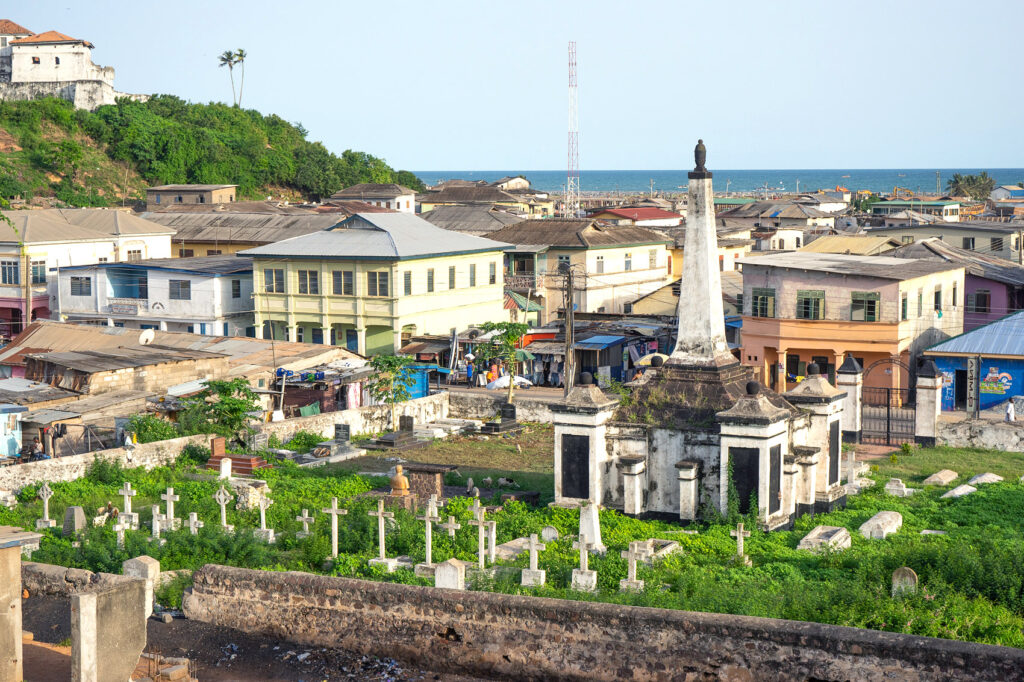
Elmina, located on a peninsula between the Benya lagoon and the sea, has a rich history dating back to the 15th century. Originally known as Anomansah, the town was established by the Portuguese in 1482 with the construction of the São Jorge da Mina Castle. During the War of the Castilian Succession in 1478, the Portuguese won a naval battle near Elmina, which led to the official recognition of Portuguese sovereignty over most of West Africa in the Treaty of Alcáçovas. The castle served as the Portuguese headquarters for trade and exploitation in West Africa, initially focused on gold and later the slave trade, with tens of thousands of slaves being channeled through Elmina.
The Dutch West India Company captured Elmina in 1637 and used it as a hub for the slave trade until British control in 1872. This transition of power was met with objections from the king of Ashanti and resulted in the third Anglo-Ashanti war. Today, Elmina’s main industries are fishing, salt production, and tourism. The town is also home to Fort Coenraadsburg, originally built by the Portuguese in 1555 and renamed by the Dutch, which serves as a reminder of its rich history.
Elmina has a rich and complex history marked by Portuguese and Dutch trade and exploitation, and later British control. Today, the town has moved past its dark history and is focused on fishing, salt production, and tourism, offering visitors a glimpse into its rich heritage through landmarks such as Fort Coenraadsburg.
Location: Komenda/Edina/Eguafo/Abirem Municipal District, Central Region
Language: Fante, English
Ghana’s Old Town Colonial Architecture in Elmina
- Elmina Castle
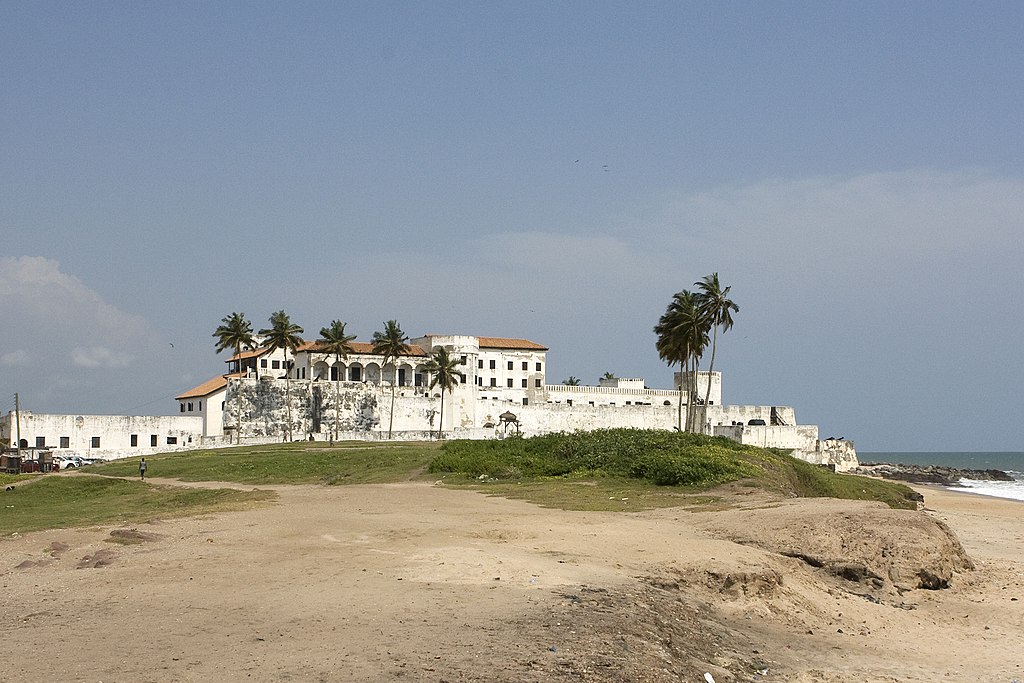
St. George’s Castle, located in the town of Elmina in the Central Region of Ghana, is a renowned historical site known for being the first major European construction in tropical Africa. The castle was founded by the Portuguese in 1482, as it was advantageously located at the end of a narrow promontory near the Atlantic Ocean and the Benya River. The natural harbor provided by the lee of the low headland allowed the Portuguese to have a trade monopoly in the area with access to the region’s gold.
However, the high volume of trade caused labor challenges, leading to the importation of slaves from Benin in exchange for gold and ivory in the early 16th century. The Portuguese were eventually ousted by the Dutch in 1637 due to economic distress caused by the influx of superior gold from Mexico. The Dutch reconstructed the castle between 1770 and 1775 and used it as the focal point for their activities on the Dutch Gold Coast. In 1872, the castle was ceded to the British and has since served as a Police Recruit Training Centre, a secondary school, and a historical museum.
Today, St. George’s Castle is a UNESCO World Heritage Site and is surrounded by a picturesque fishing harbor, Fort Coenraadsburg, the Dutch cemetery, and the Posuban buildings of Elmina.
- Fort Conraadsburg
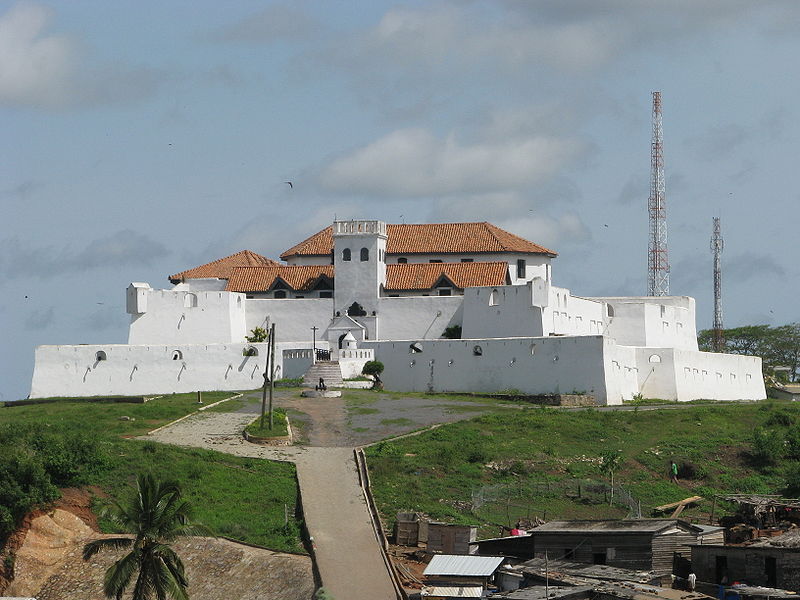
Fort Conraadsburg was built in the 1660s, taking the place of a fortified chapel built by the Portuguese, but burned down in the Battle of Elmina by the Dutch in 1637. The hill was used by the Dutch as a gun position to attack the Portuguese, leading to the construction of a fortified earthwork the following year. In 1872, the fort, along with the Dutch Gold Coast, was ceded to Britain.
- The Dutch Cemetery
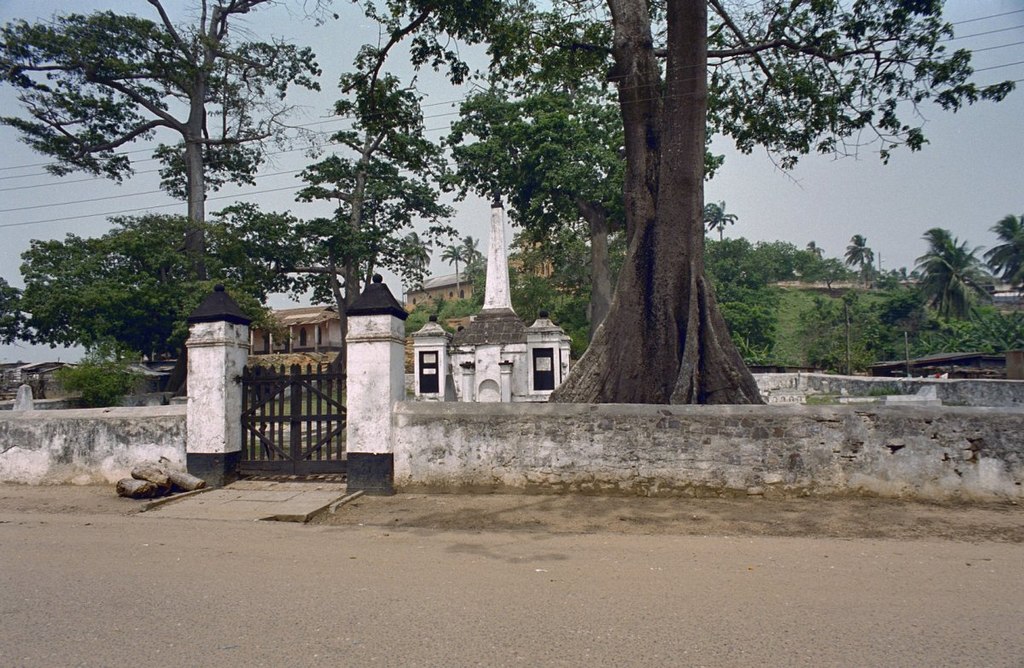
The Dutch Cemetery in Elmina was established by Governor Johannes Petrus Hoogenboom of the Dutch Gold Coast in 1806. Previously, the Dutch had buried their dead within or near Elmina Castle, but as space became limited, a new cemetery was established in an area known as “the Garden.” Governor Hoogenboom became one of the first to be buried there after he was killed in a disagreement with the local Elminese people.
2. Cape Coast
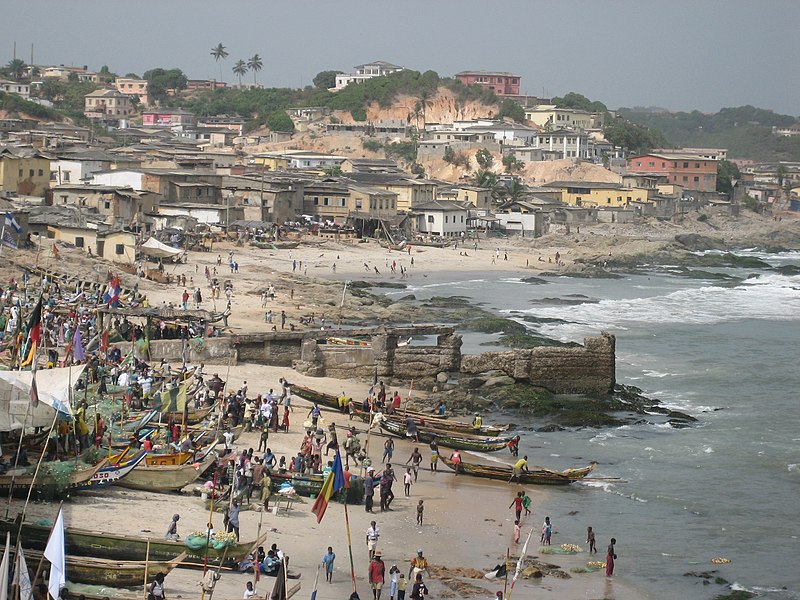
The city of Cape Coast, Ghana, was established by the Oguaa people and was ruled by the Paramount Chief, known as the Omanhene, of the Oguaa Traditional Area. Known for its rich history, Cape Coast was a hub of European colonial activity, starting with the Portuguese who built a trading fort in the area. In 1650, the Swedes constructed a lodge that later became the famous Cape Coast Castle, which is now a UNESCO World Heritage Site. Most of the modern city was developed around the castle. The Dutch took control of the castle in 1650 and expanded it in 1652, before it was eventually captured by the British in 1664.
European traders were driven to establish settlements and fortresses along the coast of Ghana for the purpose of trade. Unfortunately, the acquisition of goods like gold, slaves, honey, and other items as part of the African leg of the Triangular Trade had a devastating effect on the inhabitants of Cape Coast. In 1874, the British dominated European presence along the coast and used Cape Coast as their base of operations, known as the Gold Coast.
With the establishment of formal colonial administration, the British later relocated to Accra due to opposition to the “window tax” in 1877 and made Accra their state capital. Cape Coast Castle was also where most of the slaves were held before their journey on the infamous Middle Passage.
Location: Cape Coast Municipal District, Central Region
Language: Fante, English
Ghana’s Old Town Colonial Architecture in Cape Coast
- Fort William Lighthouse
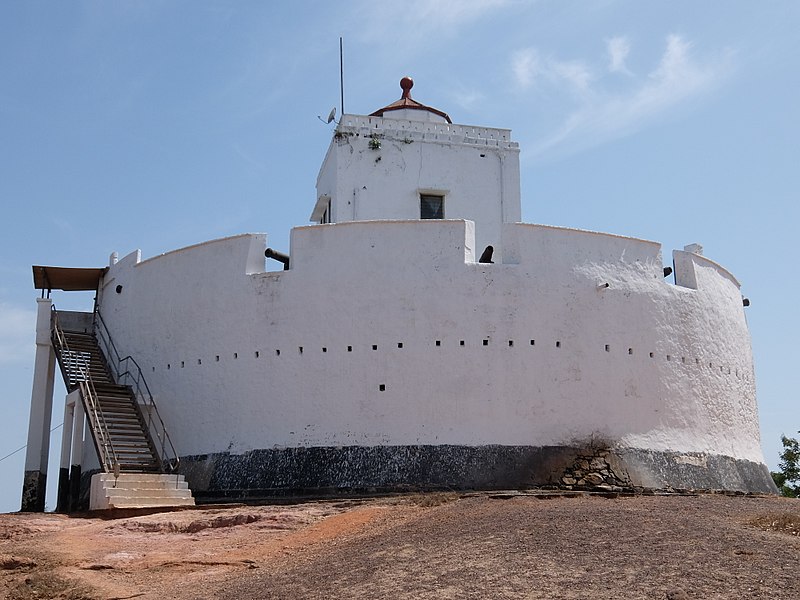
The Fort William Lighthouse is situated in the heart of Cape Coast, in the Central Region of Ghana. Despite its close proximity to the Cape Coast Castle, it is not considered part of the castle complex and is instead referred to as the Cape Coast Castle Light. The lighthouse stands on Dawson’s Hill, just 600 meters away from the castle.
This historical structure was first built by the British in 1820 under the governorship of Hope-Smith and was initially known as Smith’s Tower. In the 1830s, it underwent a renovation using stronger materials and was renamed Fort William. From that point on, it served as a lighthouse, guiding ships safely into the harbor.
Today, the Fort William Lighthouse is occupied by the staff of the Ghana Museums & Monuments Board (GMMB) and is well-maintained for visitors to tour. Its historical significance, along with the Cape Coast Castle and other castles and forts in Ghana, led to its inclusion on the UNESCO World Heritage List in 1979.
- Cape Coast Castle
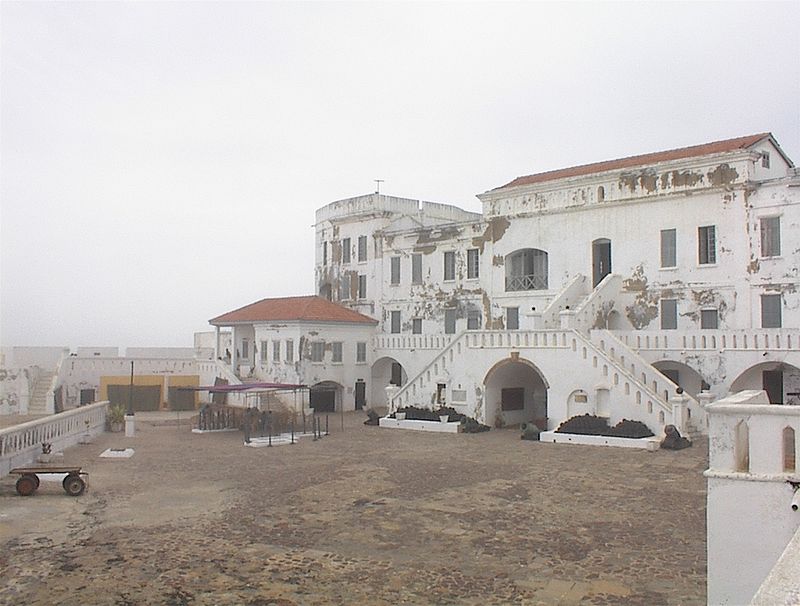
The Cape Coast Castle was built by the Portuguese in 1555 and named Cabo Corso (short cape). It was later named Cape Coast by the Portuguese and became the capital of the Central Region of Ghana. The Swedes built a fort in 1653 and named it Carlousburg. The fort was later captured by the Danes, Dutch and the British.
The castle played a significant role in the slave trade and was bombarded by the French during the Seven Years’ War. The British then reconstructed the castle with more durable materials and improved its sea defense system. After the ban on the slave trade in 1807, the castle became a center of European education in Ghana and served as the West African headquarters of the president of the Committee of Merchants, the seat of the British governor, and a school.
Today, it is a historical museum open to the public and the regional headquarters of Ghana Museums and Monuments Board.
- Fort Victoria
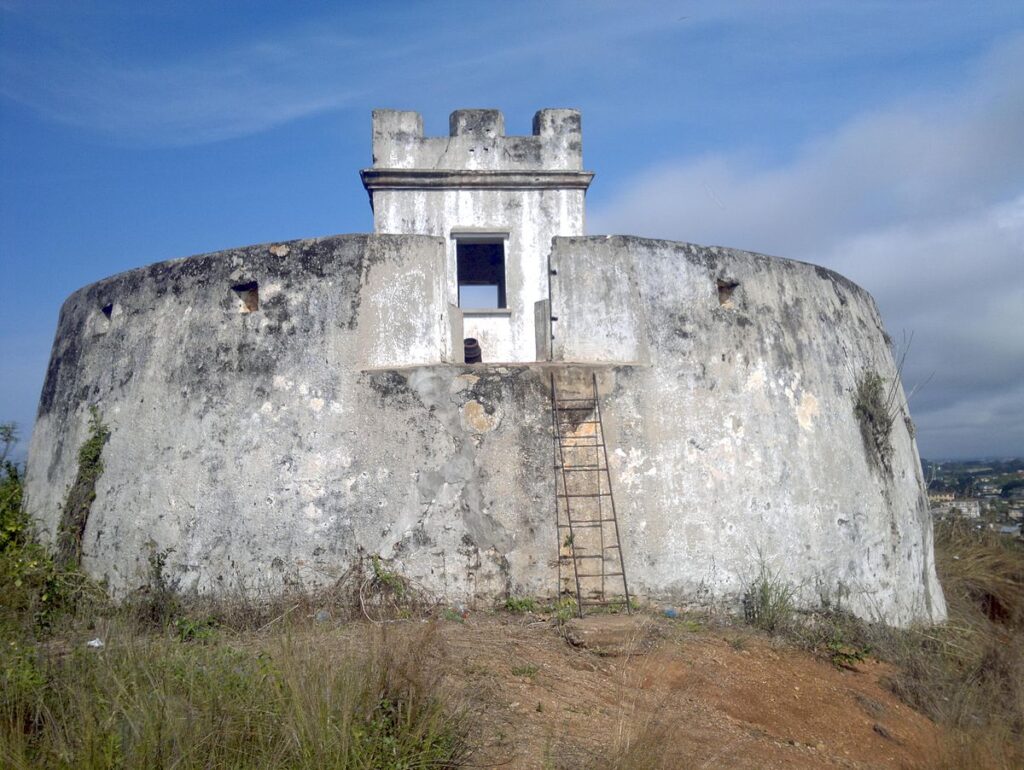
The Fort Victoria in Cape Coast, Ghana, was originally called “Phipps Tower” in honor of its builder, English Governor Phipps. However, it was later renamed in honor of Queen Victoria. The fort, along with other nearby forts and castles, was recognized for its European colonial significance and was inscribed on the UNESCO World Heritage List in 1979.
Located in the western part of the Cape Coast Township, Fort Victoria was built in 1702 on the site of a previous fort built by Governor James Phipps. The fort served as a lookout post for signaling and defense purposes. Its close proximity to Fort William allows for it to be seen from that location.
3. Larabanga
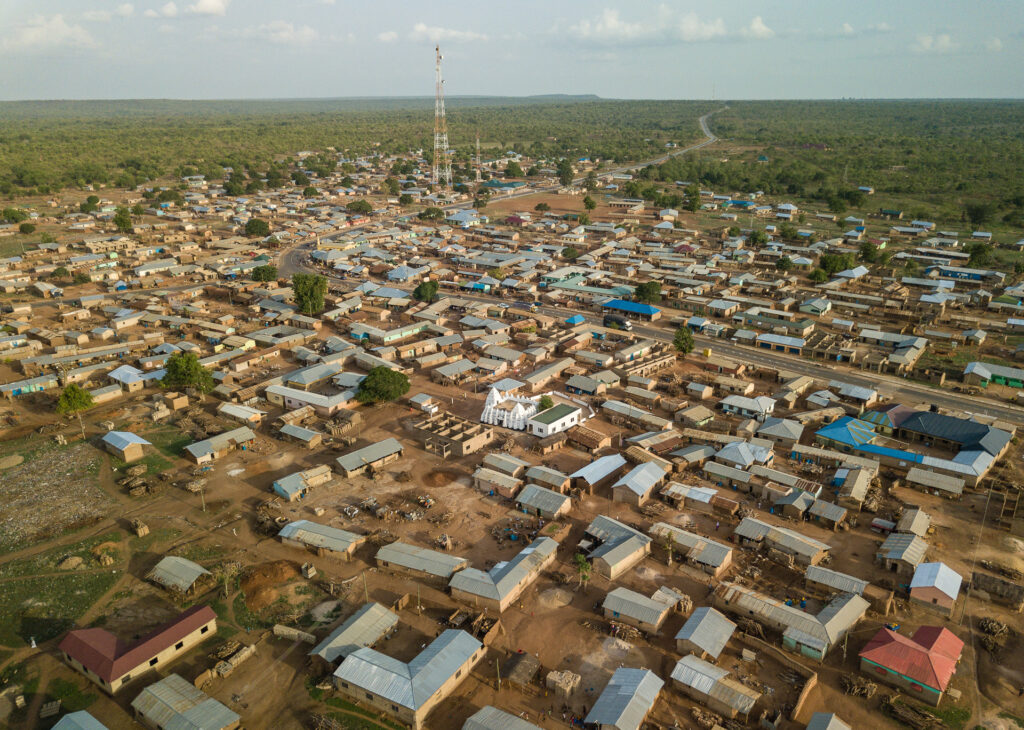
With roots going all the way back to the 11th century, Larabanga is a renowned Muslim neighborhood in Northern Ghana. The Gonja region’s agricultural provides the town’s population of over 5000 with the majority of its financial support, along with minor trade. Larabanga is the location of the well-known Larabanga Mosque, which is thought to have been constructed in the 15th century in the Sudanese style and contains an old Koran. Furthermore, the town serves as a starting point for trips to the Mole National Park and is home to the important Mystic Stone shrine.
LECLARA – “Legendary Club of Larabanga”
The purpose of LECLARA is to educate both Ghanaians and foreign visitors about the local myths, traditions, and culture of Larabanga. Long before the legendary West African slave trade pirates arrived, Larabanga had a long history that included the eras of the Samori and Babatu conquests.
Location: West Gonja District, Northern Region
Language: Dagbani, Gonja, Anfuo, Birifor, Chumburung, Hanga, konkomba, Mo, Nawuri, Tampulma, Vagla, English
Ghana’s Old Town Colonial Architecture in Larabanga
- The Larabanga Mosque
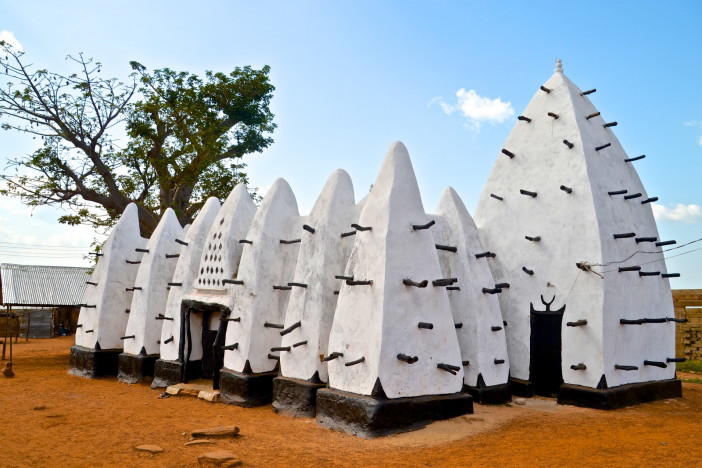
The Larabanga Mosque, sometimes referred to as the “Mecca of West Africa,” is regarded as the oldest mosque in both West Africa and Ghana. It is notable for its historical and architectural significance. The World Monuments Fund has named it as one of the 100 Most Endangered Sites due to its 8m by 8m dimensions.
The mosque is thought to have been erected in 1421 by an Islamic businessman named Ayuba who had a dream to build it, while the exact date and builder are unknown. Ayuba’s bones are interred beneath a sizable baobab tree, and the mosque is constructed of mud and wood in traditional Sudanese fashion. The village head, men, women, and the muezzin who leads the call to prayer all have separate entrances to the mosque. It houses a very old Koran that was allegedly given to an Imam Bramah around 1650.
The mosque lies in the town of Larabanga, which has a sizable Muslim population, and is situated in the Western Gonja District close to Damongo. Muslims are the only ones who can enter for GH1.00.
4. Kintampo
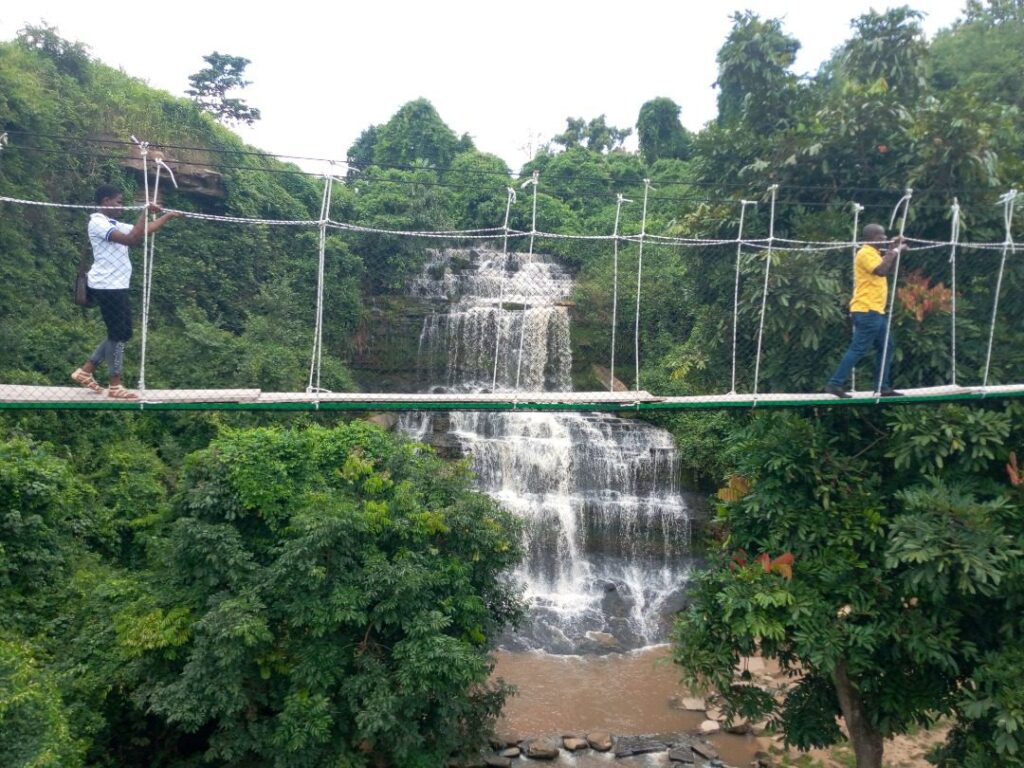
Kintampo is a historic town in the Bono East Region of Ghana and a popular tourist destination known as the Centre of Ghana site. It was designated as the capital of Kintampo North Municipal in 2004 and has a population of 49,046 people. It was also the former capital of the Kintampo District.
The majority of Kintampo’s population are farmers, who grow crops such as yams, maize, legumes, tubers, and other vegetables. The Deg tribe, also known as the Mo tribe, is indigenous to the area, and Kintampo is also home to people from other tribes such as the Wangaras, Gonjas, Konkombas, and others.
Kintampo is a cosmopolitan town with a rich cultural heritage and is known for hosting the annual Benkadi Kurubi festival of the Wangara community. According to locals, it is the oldest town in Ghana. The town also boasts a Senior High School, located at Kyeremankoma, and a College of Health, Kintampo College of Health and Well-being (CoHK).
Location: Kintampo North Municipal, Bono East Region
Language: Twi, English
Ghana’s Old Town Colonial Architecture in Kintampo
- The Centre of Ghana Site
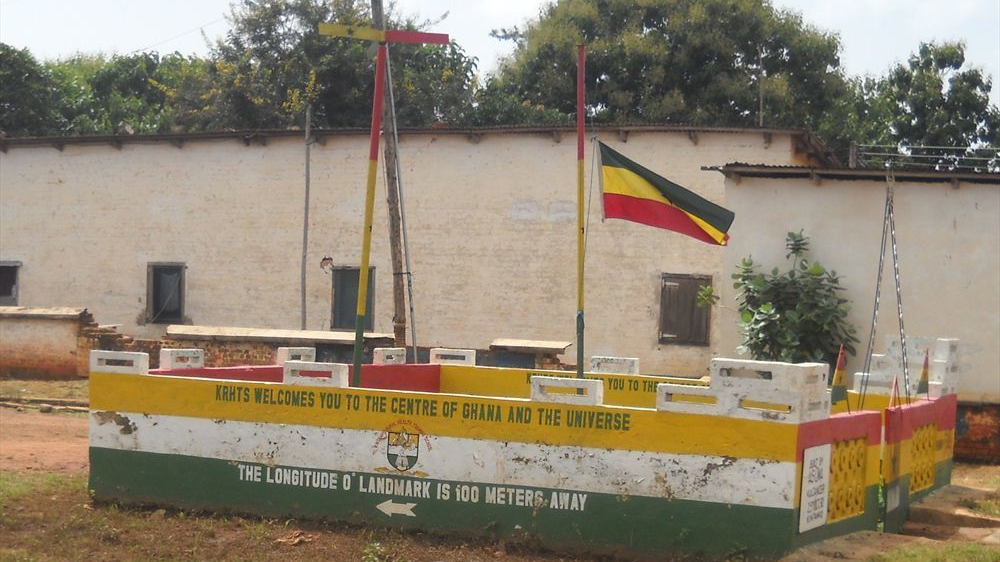
The Kintampo monument marks the center of Ghana, determined during colonial times. It is located in the town center, near the old police station, and can be accessed by taking the first paved road to the left after entering the central business district, passing the Okumah Executive Lodge. The monument is marked with the national flag and is a popular tourist attraction.
5. James Town
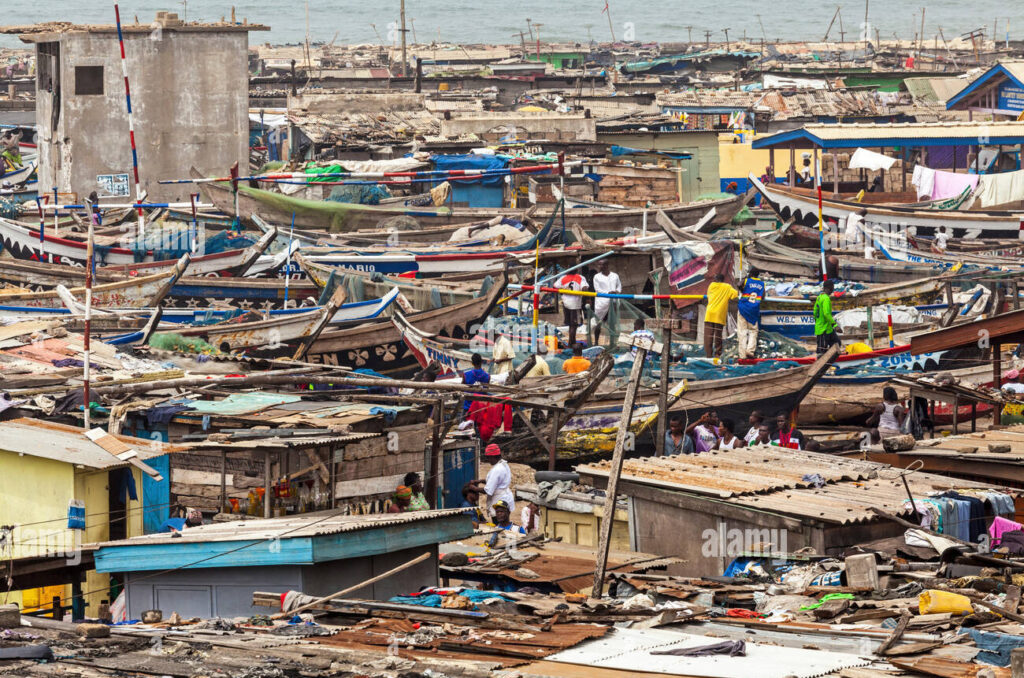
The historic districts of Jamestown and Usshertown in Accra, Ghana, are primarily inhabited by the Ga and known for their fishing communities. Despite being in a state of decay, they hold significant importance in Accra’s history as they replaced Cape Coast as the capital of the British colony, Gold Coast, in 1876.
The current lighthouse, 28m tall, was built in the 1930s to replace the original lighthouse from 1871 and offers a visibility of 16 nautical miles. Efforts to re-develop the districts, referred to as “Ga-Mashie,” are underway with the inauguration of the 2015 Old Accra Strategy. Jamestown is famous for the annual Chale Wote Street Art Festival and the origin of the Azonto dance.
Bukom, Adedainkpo, Swalaba, Korle Woko, and Akoto Lante are some of the areas included in Jamestown and Usshertown. The local language “Ga” is widely spoken by the natives. Jamestown was established by the British in 1673-74 and its cosmopolitan mix of peoples started with the arrival of British settlers, slaves, and laborers from Nigeria, as well as Ga and Fanti workers.
Location: The Accra Metropolitan District
Languages: Ga, Twi, English
Ghana’s Old Town Colonial Architecture in James Town
- Fort James
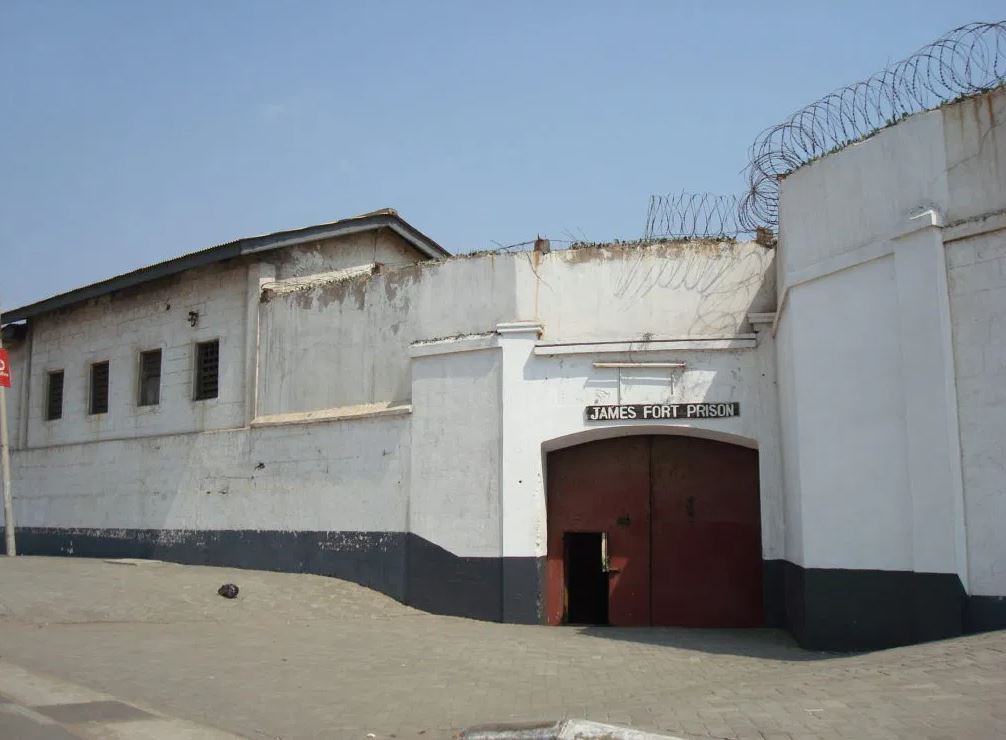
Fort James, also known as James Fort, is located in Accra, Ghana. Built in 1673 by the Royal African Company of England as a trading post for gold and slaves, it was one of three forts along the Gold Coast, including the Dutch Fort Crêvecœur (1649) and Danish Fort Christiansborg (1652). In 1979, Fort James was added to the UNESCO World Heritage List due to its significance during the European colonial period.
It was named after King James II, who was the Governor of the Royal African Company at the time of its construction. It served as a prison up until 2008 and was where Ghana’s first president, Kwame Nkrumah, was imprisoned from 1950 to 1951. Today, Fort James is well-preserved and serves as a tourist attraction.
- Jamestown Lighthouse
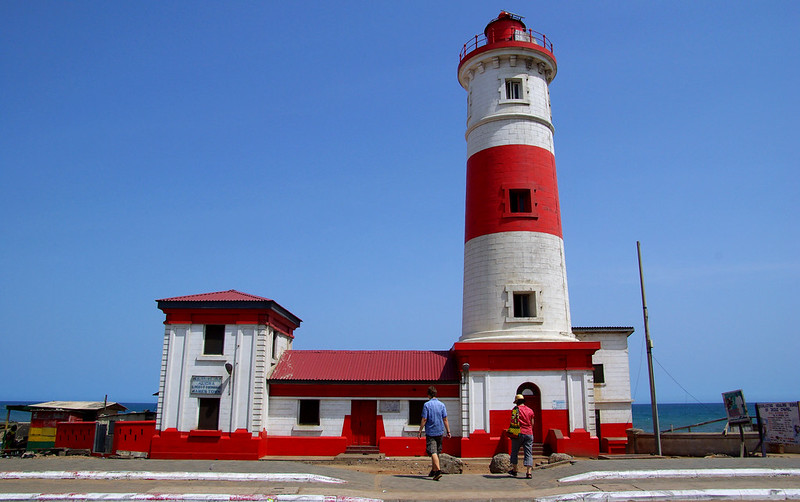
The colonial lighthouse, built in the 1930s to replace an 1871 predecessor, has become a popular tourist destination. Despite its popularity, there are no gift shops or ticket offices, providing a peaceful viewing experience. Standing at 28 meters tall, visitors can climb its spiral staircase for panoramic views of Jamestown and the nearby fishing harbor. Guided tours are also available for those interested.
- Ussher Fort
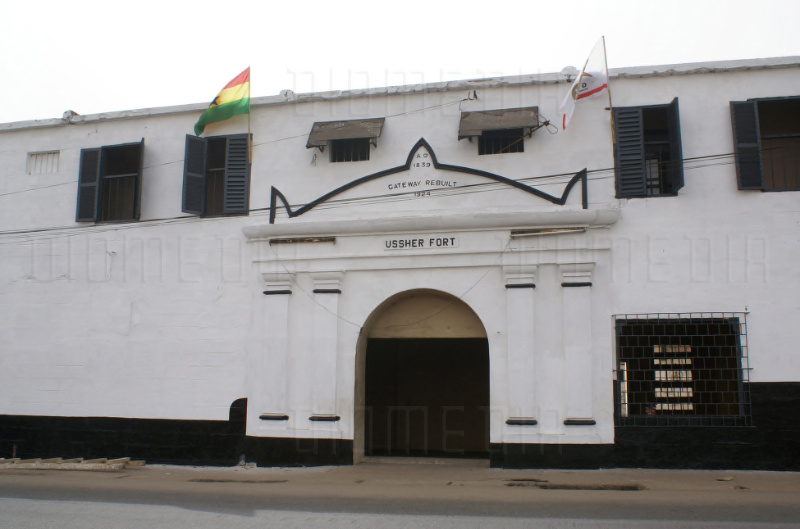
The Ussher Fort in Accra, Ghana was originally built by the Dutch in 1649 as Fort Crèvecœur. It was part of the Dutch Gold Coast and was transferred to the British in 1868 through the Anglo-Dutch Gold Coast Treaty. In 1979, the fort was inscribed on the UNESCO World Heritage List due to its historical significance in European colonial trade and exploitation in Africa. Currently, the fort is being restored with funds from the European Commission and UNESCO to convert it into a museum and International Documentation Centre.
Ussher Fort opens from 9:00 am to 4:30 pm from Mondays to Saturdays and public holidays. It was once used as a prison and was where Ghana’s first president, Dr. Kwame Nkrumah, was imprisoned during the colonial era. Today, the fort houses a museum and the offices of the Monuments Division of GMMB. Chale Wote is also hosted virtually in its premises. The fort is located in James Town, by the Central Business District in Accra, about 500m past Fort James.
Conclusion
In conclusion, if you are a fan of history and architecture, a visit to Ghana’s old towns is a must. From the stunning Elmina Castle to the charming colonial architecture of Cape Coast Castle and James Town Light House, there is much to be discovered and explored. So, whether you are a history buff or simply someone looking for a unique travel experience, be sure to add Ghana’s colonial architecture to your bucket list today!
Watch: Elmina Castle / Cape Coast Castle – Year of Return: All Africans in Diaspora must visit the Castles
